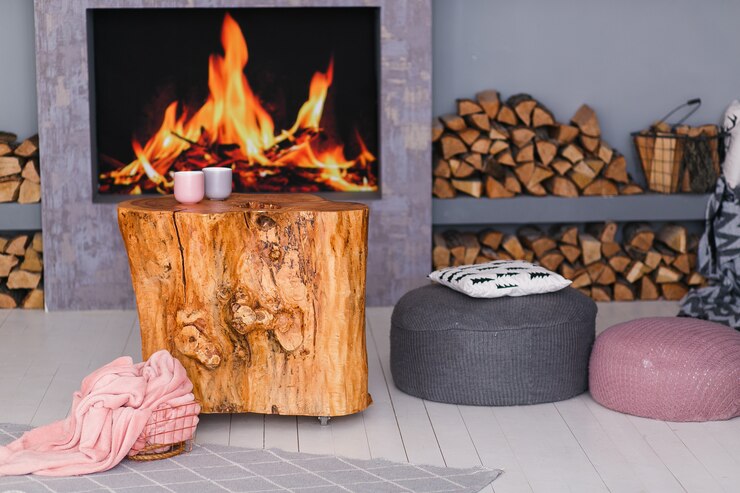Wood boilers are gaining popularity as a reliable heating option for homes and businesses. These systems use wood or pellets as fuel and can provide efficient, cost-effective heating solutions. They come in various types, each with unique features that cater to different heating needs.
When considering a wood boiler understanding the installation process and operational efficiency is essential. Proper installation can maximize performance, while routine maintenance ensures longevity. As environmental concerns continue to grow, wood boilers also offer a renewable heating source, making them a practical choice for eco-conscious users.
As technology advances, the future of wood boilers looks promising, with innovations in efficiency and emissions. These developments position wood boilers as a sustainable option in the heating market, appealing to many looking for alternatives to traditional fossil fuels.
Key Takeaways
- Wood boilers provide efficient and cost-effective heating.
- Regular maintenance is crucial for optimal performance.
- Innovations are enhancing the sustainability of wood boilers.
Basics of Wood Boilers
Wood boilers are designed to provide efficient heating by using wood as a fuel source. They come in different types and have specific components that play important roles in their operation.
Operating Principles
Wood boilers operate by burning wood in a designated firebox. As the wood burns, it generates heat, which is used to heat water or produce steam. This hot water or steam is then circulated through pipes to heat buildings.
The process involves mixing air with the wood to create combustion. This ensures that the wood burns completely, producing more heat and fewer emissions. It is essential to use seasoned wood, as it burns efficiently and reduces moisture content, allowing for better performance in the boiler.
Types of Wood Boilers
There are mainly two types of wood boilers: conventional and gasification.
- Conventional Wood Boilers: These use simple firebox designs. They are often less expensive but can be less efficient.
- Gasification Wood Boilers: These have advanced technology that burns wood gas released during combustion. They achieve higher efficiency and lower emissions compared to conventional models.
Selecting the right type depends on the user’s heating needs and budget. Knowledge of these options helps in making an informed decision.
Components and Design
Wood boilers consist of several key components that ensure optimal function.
- Firebox: The area where wood is burned.
- Heat Exchanger: It transfers heat from burning wood to the water.
- Water Tank: Stores the heated water for distribution.
- Chimney: Allows smoke and gases to escape safely.
The design of wood boilers can vary. Some models are designed for outdoor installations, minimizing indoor air quality concerns. Others are designed for indoor use, providing immediate heat to the space. Proper maintenance of these components is crucial for efficiency and longevity.
Installation
Installing a wood boiler requires careful planning and execution. This section covers key points such as pre-installation considerations, the installation process itself, and the regulations that must be followed.
Pre-Installation Considerations
Before beginning the installation, it’s crucial to assess several key factors. First, choose a suitable location for the boiler. This spot should have enough space for maintenance and comply with local codes. The area should be dry and free from flammable materials.
Next, evaluate the heating needs of the space. Calculating the heating requirements helps in selecting the right size and model. It’s also important to consider the piping and ductwork that will connect the boiler to the home.
Finally, verify the availability of fuel sources, such as wood logs or pellets, and ensure there are proper safety measures in place.
Installation Process
The installation process starts with preparing the site. This involves clearing the area and ensuring a stable base for the boiler. Once the site is ready, the boiler can be set in place.
Installation steps include:
- Connecting Piping: Use the right size piping to connect the boiler to the heating system. Properly sized pipes ensure efficiency and prevent pressure issues.
- Setting Up Heat Exchanger: Install a heat exchanger if necessary. This component transfers heat from the boiler to the home’s water system.
- Wiring Electrical Components: Connect the electrical components according to the manufacturer’s instructions. Ensure safety measures are in place during this process.
- Initial Water Treatment: Once everything is set up, fill the system with water. Implement treatments to prevent corrosion and bacteria growth.
Regulations and Compliance
Compliance with local and national codes is essential during installation. Regulations vary by region, so he or she should check with local authorities. Installing a wood boiler might require permits and inspections.
These inspections ensure safety and efficiency in the heating system. Some areas may have specific emissions regulations that a wood boiler must meet.
Additionally, local fire codes might dictate certain safety distances from structures. Adhering to these regulations prevents potential fines and promotes safe operation of the wood boiler system.


